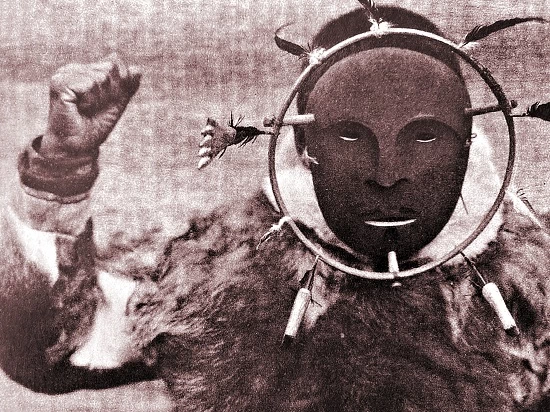
Shamanism
A Quick Note on Animism
While this series of posts illuminates the evolution and influence of shamans in the modern world, it is important to note the existence of its “spiritual counterpart” – animism. Considered the world’s earliest religion, animism dates back to hunter-gatherers over 50,000 years ago. It encapsulates the idea that all material objects – trees, rocks, animals, humans, stars – have an interconnected spiritual energy flowing through it. While animism and shamanism are not one in the same, they relate closely to each other. Even today, religions like Shintoism, Buddhism, and Hinduism practice elements that could be considered “animist,” including leaving sacrifices at special shrines for the spirits overhead. Think of animism as the “mother” of all modern religion – it is that enduring a religious ideal for humanity.
To simplify, picture this:
Animism is a way of seeing and being in the world that evokes a constant spirituality. It’s observed like a religion. Animists feel “at the whim” of the spiritual world – kind of a “go with the flow” fatalism.
Shamanism is an active spiritual practice, not just observation. The shaman believes he can speak to, and engage with, this spiritual world. This sense of sacred individuality empowers shamans on their quest of fulfillment.
In a nutshell, if there was an “evil spirit” lurking in the air, the animist would say “oh no! There’s nothing we can do. Let’s try offering a sacrifice to appease this demon.” The shaman would remark, “I can enter a state to communicate with this evil spirit and tell him to get the hell outta here!”
…ok, maybe not in those exact words. But you get the point ? Shamans were much more hands-on in asserting their individual spirit when communicating with the Spirit World.
Unintentionally Biased: the Western Conception of Shamanism is Incomplete
Modern Western conception of shamanic practices started with the 1871 publishing of Primitive Culture by English anthropologist Sir Edward Taylor. What a guy. While Edward Taylor gave the basic framework westerners use to conceptualize shamanism, it’s important to remember for people that really want to dig into shamanic ritual that their perception of it may be a bit tainted by a this straight-laced Englishman. The form, purpose, power, and subtleties and shamanism may be glossed over if you overgeneralize shamanic rituals. While religious practices resembling shamanism appear in world cultures all over the world, the ethereal nature of each practice holds its own unique key to the universe. Don’t forget that as you read on.
It’s important to be respectful when talking about such ancient religious practices that filled our ancestors lives with color, connection, and meaning. So, please note that Shamanic practices refer more directly to rituals and cultural practices that came out of Siberia ~30,000 years ago.
What’s incredible is that, with remarkable synchronicity, Mesoamerican, Asian, Indian, Native American, and other indigenous cultures all developed their own unique spiritual “mediums” – ones who connected the living and the dead. The material and spiritual.
HOWEVER! These folks are not technically shamans. Some would argue that the term shamanism has been applied far too broadly. Indigenous cultures may consider themselves “naturalists,” “spiritualists,” “psychic mediums,” or priests – but NOT shamans.
However, don’t feel bad if you’ve overgeneralized shamanic practices! While each shamanic ritual is wholly unique in of itself (if done right), the sacred elements underpinning shamanism predate organized civilization by ~27,000 years.
To help grasp the purpose of the shamanic journey, check out the “4 tenants of shamanism” listed below:
Shamans are mystics who can communicate with the Spirit World
Shamans and the people they treat make use of psychedelic substances (e.g. – mushrooms, ayahuasca, salvia, cannabis) to attain a trance-like state, where spiritual engagement takes place
After experiencing the “edge of sickness and death” themselves, shamans tout the ability to heal people and transcribe prophetic messages for humanity. To an enlightened individual, a shaman is simply a sick man who has healed himself.
Rhythmic and harmonic “set and setting” encourage a sense of “religious ecstasy” – imagine the peak moment of seeing your favorite musical artist live. The rhythmic movement is intended to tap into the pulsations and vibrations of the wider cosmos, whose have been validated through scientific instrumentation.
You will learn more about Shamanism in the next part.
Comments
Tadeusz Kaminski
Ciekawy wgląd
Arthur Girard
Unusual article. Very interesting
Ada Jansen
Interessant geschreven
Alex Lee
I like this!!!!!!!!!✌️
Ant Flydos
This is mee!!!

Emma Cloutier
I love this article